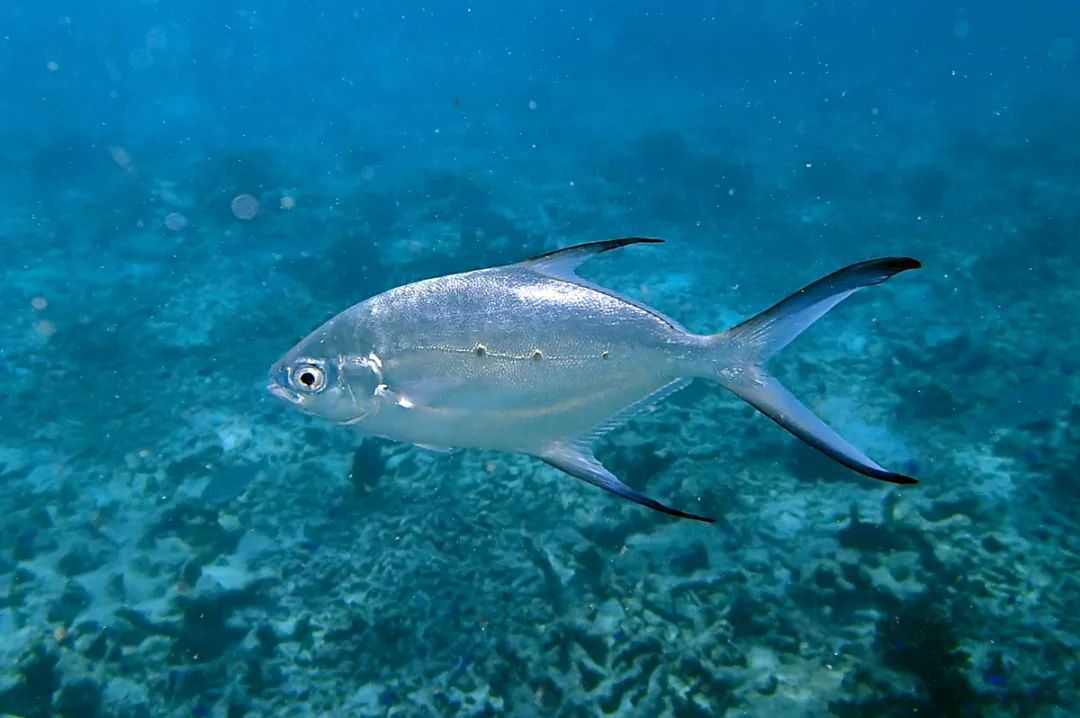
It inhabits the warm waters of the Indo-Pacific, from the Red Sea to the Line Islands and from southern Japan to Lord Howe Island, adding a touch of elegance to the diverse marine ecosystems it calls home.
This fish showcases a streamlined, oval - shaped body that can reach up to 60 centimeters in length, with a silvery - blue to greyish hue on its dorsal side that fades to a silvery - white belly. Its most distinctive feature is the presence of 1 to 6 relatively small black spots arranged in a longitudinal row along the lateral line, though these spots are absent in juveniles under 10 - 13 cm in fork length. As the fish matures, the number of spots typically increases. The fins of Trachinotus baillonii are also notable; the caudal, second dorsal, and anal fins are greyish to black, with darker lobes, while the pectoral fins are pale yellow to brownish - yellow, and the pelvic fins are pale yellow to orange - yellow.
In its natural environment, Trachinotus baillonii is often found near the surface waters of lagoons, seaward reefs, and particularly in the surge zones along sandy beaches at depths ranging from 0 to 3 meters. Adults usually move in pairs or small groups, patrolling the reef edges, while juveniles tend to form schools in more sheltered bays. Their diet mainly consists of crustaceans, small fish, and polychaete worms. Despite being a relatively common sight in its habitat, it faces potential threats from overfishing in some areas, as it is occasionally targeted by both trolling and line fishing. Conservation efforts, including monitoring fishing activities and protecting its coastal habitats, are crucial to ensure the long - term survival of this beautiful and ecologically important species.




